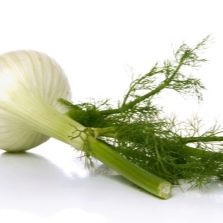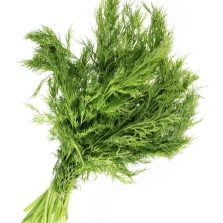Fennel (pharmaceutical dill)

A plant called Fennel belongs to the Umbelliferae family. In our country, the plant is also called Voloshsky or pharmacy dill. Fennel has been valued since ancient times as a medicinal plant and spice.
Other names for this herbaceous perennial:
- Foeniculum vulgare (lat.),
- Fennel (English)
- Fenouil, Aneth doux (fr.),
- Sußfenchel, Gewürzfenchel, Brotwürzkörner, Brotanis (German).

Appearance
Fennel is noted to be very similar to dill, although the taste and aroma of this plant is more spicy, slightly spicy and sweet.
- The fennel stem is straight and hollow, bluish-green in color, grows up to 250 cm in height. Longitudinal stripes can be seen on the stems of old plants.
- Fennel leaves resemble dill leaves, but are thinner and have an anise-like flavor.
- Flowers are represented by umbrellas up to 15 cm wide, consisting of tiny yellow flowers with short legs (up to fifty in each section). The plant begins to bloom in early summer.
- The fruits, represented by long gray ribbed two-seeded seeds, gives in September.



Kinds
Today, there are about ten varieties of plants, but only two of them are used for food:
- ordinary;
- vegetable (its other names are Italian, Sicilian or French).
As a vegetable, fennel began to be used recently - about 10 years. The plant is mainly used as a herb.
In vegetable fennel, the bases of the leaves are inflated, due to which a bulbous structure is formed. The taste of this cultivated fennel is sweeter and more aromatic (reminiscent of anise), and the plant is smaller.

Where does it grow
Fennel is native to Asia Minor and southern Europe. Now it is grown throughout Europe, in India, Japan, South America, New Zealand and other parts of the planet. The plant can be seen near houses, roads, on the slopes of mountains, in ditches, among other herbs. Wild fennel grows in the Caucasus and on the Mediterranean coast. The plant is cultivated in Russia, Ukraine, Belarus.

spice making method
As a spice, used:
- aerial part (leaves),
- root;
- fruits (seeds).
The leaves are harvested in the summer. They are laid out to dry in a thin layer in a shaded place on clean paper. Periodically, the raw material is turned over.
Dried herbs should be put in a canvas bag or cardboard box and sealed tightly.
Also, for harvesting fennel herbs, the dry salting method is used, which is used to harvest dill, parsley and other herbs.

Characteristics
- Fennel is valued for its fragrant edible leaves and fruits.
- The plant is used in cosmetology, cooking, as well as in medicine.
- Fennel fruit contains an essential oil.
- The appearance and use of fennel make the plant look like dill.

Nutritional value and calories
| Squirrels | Fats | Carbohydrates | calories | |
| In 100 g of onions | 1.24 gr. | 0.2 gr. | 4.19 gr. | 31 kcal |
| In 100 g of seeds | 15.8 gr. | 14.8 gr. | 12.49 gr. | 345 kcal |
Chemical composition
- Vitamins A, C, PP, group B.
- Magnesium, phosphorus, calcium, potassium, sodium.
- Copper, iron, manganese, zinc.
- Essential oils - up to 0.5 percent in leaves and up to 6.5 percent in fruits.

Beneficial features
- The plant has an antispasmodic and slight diuretic effect.
- Fennel has disinfectant properties.
- Aroma oil from this plant helps to eliminate toxins.
- Fennel powder is included in cough medicines as a good expectorant.
- The plant helps in restoring appetite during the recovery period, improves digestion.
- Used externally, an infusion of fennel fruits helps with fungal diseases.
- The plant has a calming effect.
- Fennel is able to stimulate lactation.
Dill water made from fennel.

Harm
- Seeds and other parts of the plant can be harmful if they are intolerant or consumed in excess.
- The plant is not recommended for pregnant women and patients with epilepsy.
- When breastfeeding, use fennel with caution.
- Abuse of the plant causes allergic reactions and indigestion.
Oil
Fennel aromatic oil is obtained by steam distillation of its seeds. Fennel EO contains fenchol, limonene, anethole, camphene, phellandrene, pinene. The oil has a spicy sweet smell, remotely similar to anise.

Benefits of Fennel EO:
- comprehensively cleanses the body, helps to remove toxins;
- has a mild laxative and diuretic effect;
- activates digestion;
- helps with bloating and constipation;
- in women, it stimulates the endocrine system and the production of estrogen, which alleviates PMS, painful periods and menopausal difficulties;
- increases lactation;
- enhances sexual desire;
- reduces inflammation and facilitates the separation of sputum;
- improves heart function;
- helps to cope with hiccups and colic;
- rejuvenates the skin;
- helps fight acne.

Fennel oil is added to cosmetic preparations (gel, mask, tonic, cream, and others), used for massage, for compresses, baths, inhalations, and also added to an aroma lamp to sanitize the air. It is also in demand in the production of household chemicals (as a fragrance) and the food industry (as a fragrance).

Fruits (seeds)
Fennel fruit is usually not very correctly called seeds.
Decaying fruits form from yellow flowers.
Characteristics
- Shape - from oval to cylindrical, slightly curved.
- Aroma - spicy-sweet anise.
- Fruit color - greenish or yellow-green, length - 3-8 mm.
Ripe fruits are harvested in autumn.
Larger seeds are of the highest quality.

Application in cooking from different countries
- In Central Europe, they are most often seasoned with bread;
- In Europe, for example, Italy - lentils, sausages, various fillings. It is a common seasoning for suckling pig (porchetta).
- In Asia, India and China, curries, rice dishes and vegetables are flavored with other spices.
Application
In cooking
- Fennel as a spice is in demand in Chinese, Indian and European cuisine.
- Fennel leaves serve as a seasoning added to salads, potatoes, vegetables, meat, poultry, fish.
- The plant is used to add flavor to gravy, sauce or soup.
- Dried fennel is either crushed or lightly roasted before use.
- Fennel is added to tea, pastries, drinks.
- This spice is included in well-known mixtures - curry, Provence, Chinese (5 spices), European for fish.
- Fennel umbrellas are used in canning and pickling.
- As a vegetable, the plant is boiled, stewed, pickled or baked.
- Fennel goes well with olive oil, pepper, lemon juice, apples.
- Sugar-dipped fennel seeds are served as a dessert in Indian restaurants.






See below for details.
In medicine
Fennel is called one of the most ancient medicines. People discovered its beneficial effect even before our era.
Medicinal raw materials of fennel are its ripe fruits.

The plant is valued for the following medicinal properties:
- antimicrobial;
- expectorant;
- anticonvulsant;
- vasodilating;
- diuretic;
- sedative;
- bronchodilator;
- enveloping;
In addition, the following effects of fennel on the body are noted:
- antispasmodic;
- anti-inflammatory;
- wound healing;
- anthelmintic;
- painkiller;
- antioxidant;
- choleretic;
- disinfectant;
- laxative;
- lactagon.

A decoction of the seeds is used to wash the skin against pustular lesions, as well as wash the eyes with conjunctivitis. It is drunk to get rid of flatulence and insomnia. Since the plant improves vision, its extracts are included in tonic eye preparations.
In cosmetology
Fennel is actively used by cosmetologists, since the plant restores the moisture of the skin well, promotes rejuvenation and tones the skin.
Essential oils obtained from fennel leaves and seeds are used as:
- component of tonic lotions and body creams;
- massage agent, combining them with a base oil (almond, olive or other);
- ingredient in anti-aging creams.

When losing weight
Those who are on a diet should pay close attention to fennel. The active substances in the composition of the plant can dull the feeling of hunger. In addition, the plant contains vitamins and minerals that support the body on a diet.
Features of the use of fennel for weight loss:
- The plant can be eaten raw and made into a tea.
- Fennel EO is added to baths and used for massage.
- For tea, take chamomile flowers, fennel seeds, linden flowers and mint leaves (a teaspoon of all plants). Pour boiling water and leave for one hour. Consume hot or cold once a day. Do not drink this tea for more than one week.

At home
The plant is grown as an indoor plant to add a fresh, sweet smell to the room.
- Fennel EO is used in the perfume industry.
- Fatty oil of fennel, obtained in the process of distillation of aromatic oil, is used in engineering. Waste after its receipt is fed to livestock.
- The plant is sometimes used to flavor toothpaste.

cultivation
Growing fennel in the garden is very easy. The plant grows well in open fertile areas with a sufficient level of moisture and the amount of lime in the soil. Fennel does not grow well in acidic, waterlogged or clay soil.

The plant is propagated by seeds, sowing them dry both in autumn (late October) and in spring (early May). Seedlings must be thinned out, the soil is regularly loosened, watered and weeded in a timely manner. If the plant grows too densely and receives little moisture, then it will begin to shoot faster, which will reduce the green yield. You can harvest fennel as the greens grow.

To get your fennel seeds to plant, you need to let them mature. Having collected them in September in umbrellas, the raw materials are tied into sheaves and dried in the shade. Then the umbrellas are threshed, the seeds are dried a little and put away for storage in a closed container.





















Fennel is very often grown here in the Urals, but for some reason it is not popular in the Moscow region.